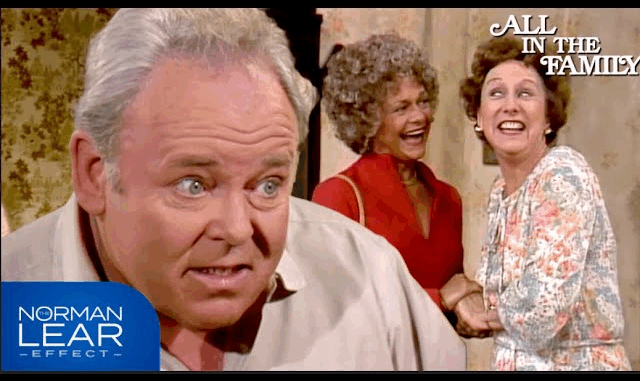
Decades before television embraced the label “prestige drama,” one sitcom dared to take on the role of America’s social critic: All in the Family. Airing from 1971 to 1979, the show didn’t just entertain—it challenged its audience to think, to debate, and sometimes, to squirm in their living rooms.
Created by Norman Lear, All in the Family arrived during a period of seismic cultural shifts in the United States: the Civil Rights Movement, the Vietnam War, the Women’s Liberation Movement, and economic uncertainty. Rather than offering escapism, the show held a mirror to society. Through laughter and discomfort, it asked the American public to confront its own values.
Archie Bunker, the show’s central figure, is perhaps one of the most controversial and iconic characters in television history. With his brash voice, crude opinions, and outdated beliefs, Archie was both a caricature of resistance to change and a painfully accurate reflection of a segment of the population. Carroll O’Connor’s performance gave the character unexpected depth, allowing viewers to laugh at Archie while also understanding where he came from—a complex portrayal rarely seen in sitcoms before or since.
The supporting characters were just as crucial. Edith Bunker, played masterfully by Jean Stapleton, offered empathy and quiet strength beneath her seemingly naïve demeanor. Gloria (Sally Struthers) and Michael (Rob Reiner) represented the younger generation, clashing constantly with Archie in ways that echoed the generational divides playing out across the nation.
But beyond the characters, All in the Family revolutionized television storytelling. It was the first network sitcom to regularly address hot-button topics: racism, homophobia, women’s rights, gun control, and economic inequality. It used laughter not as a distraction, but as a gateway to honesty.
It also pioneered the “live audience” format that brought an unfiltered, raw energy to each episode. The tension in the room was often palpable, because audiences were reacting not just to punchlines—but to ideas, opinions, and uncomfortable truths.
What makes All in the Family still resonate today is its relevance. Many of the issues it tackled are far from resolved. Its format—characters debating in a confined, domestic setting—feels strikingly similar to modern social media discourse, only without the anonymity.
More than 50 years after its premiere, All in the Family remains a blueprint for how television can be both bold and brilliant. It didn’t settle for laughs alone—it demanded that viewers pay attention. And perhaps more importantly, it asked them to think.
